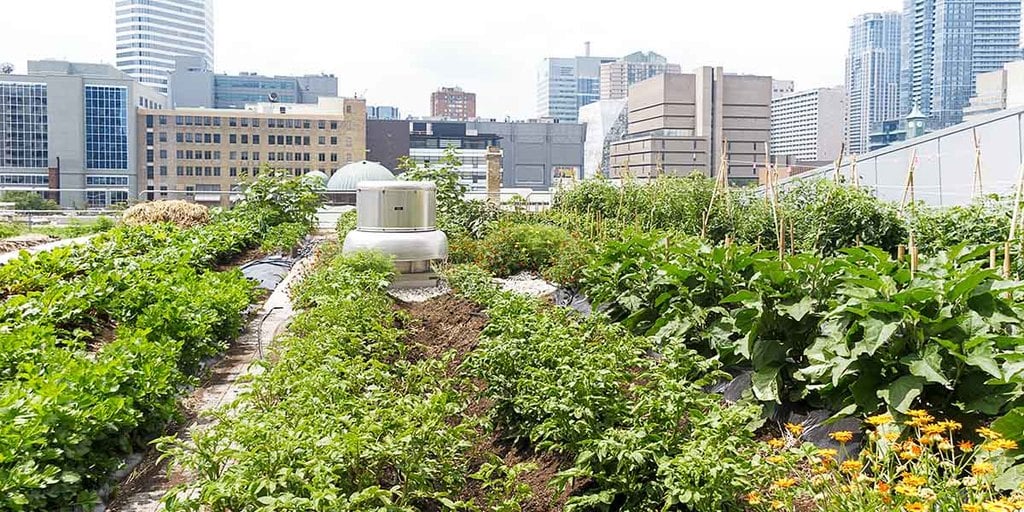The Ultimate Guide To City Blooming
The Ultimate Guide To City Blooming
Blog Article
All About City Blooming
Table of ContentsThe 6-Minute Rule for City BloomingUnknown Facts About City BloomingThe Only Guide to City BloomingThe 8-Minute Rule for City BloomingCity Blooming Things To Know Before You Buy
Fascinated in expanding food available in the City of Chicago? Considering starting a neighborhood garden? Adjustments to the Chicago Zoning Statute enable farming usages like community yards and metropolitan farms in lots of parts of the city. Below is a list of regularly asked concerns relating to the rules and laws that cultivators should consider when intending a metropolitan agriculture job.
The zoning change does not change any type of various other codes taking care of composting, structure licenses, purchasing or leasing City owned home, business licenses or ecological contamination. There are existing codes that manage these concerns and they stay completely result and might be relevant to your project. Neighborhood yards are usually possessed or taken care of by public entities, civic organizations or community-based companies and kept by volunteers.
Urban ranches expand food that is planned to be marketed, either on a not-for-profit or for-profit basis. Due to their commercial objective, urban farms require a service permit.
The 6-Second Trick For City Blooming
The amount of garden compost product can not surpass 25 cubic lawns at any type of offered time according to the requirements in 7-28-715 of the City's Municipal Code. Due to the fact that the soil at a lot of brand-new garden sites needs amending, garden compost, soil, wood chips, or other products can be gotten to create or boost the expanding room.

If a building license is required then the hoophouse will certainly be considered an accessory structure. You can learn even more regarding the structure license needs by speaking to the Division of Buildings. The 25,000-square-foot dimension limit is intended to stop a single area yard from dominating a provided block or diminishing the block's existing household or commercial personality.
The limitation does not use to yards situated in Public Open Space (POS) districts. Can there be even more than one area garden that is 25,000 square feet on a solitary block? Yes. The size restriction puts on specific gardens, not to private blocks. No. Secure fencing is not needed, nonetheless, gardens that have big auto parking areas may be called for to install fence or various other landscaping functions.
City Blooming - Truths
B1 & B2 districts require that all commercial use tasks be performed inside. R districts limit commercial activity. The guidelines mirror the purpose and intent of the Zoning Code. Is fencing required for urban ranches? Yes. Fencings may be needed, together with landscaping and screening, for certain parking lot and exterior work or storage locations relying on area and the certain task occurring.
Yes. Urban ranches call for structure authorizations and zoning authorizations before building. Other forms of city review may be called for depending on specific structures, tasks, dimension, landscape design, licensing, public health and stormwater administration concerns. Much of these needs are identified in the task layout or permitting process, however, the candidate might be accountable to individually recognize details licenses or permits that may be needed.
Yes. The kind of license is determined by what is occurring at the site. The Department of Business Affairs and Consumer Security can help establish the certain type of business permit that's needed. Yes. Off street vehicle parking is required for most commercial projects in Chicago. The needed variety of garage is based on the variety of staff members working on website and not the square video footage of the growing area.
Fascination About City Blooming

A city farm can sell garden compost material generated on website, however, the procedure must comply with the policies in 7-28-715 of the Chicago Municipal Code. Aquaponic systems are allowed indoors on urban farms in many zoning areas.
Approximately 5 hives or nests of honey might be kept as an accessory use. Beekeepers have to register with the Illinois Division of Farming. To learn more about the recommended zoning modification you may speak to the Department of Housing and Economic Advancement, Bureau of Preparation and Zoning at 312.744.8563.
Farming in cities and city areas An urban farm in Chicago. Urban agriculture refers to numerous techniques of growing. https://penzu.com/p/e1495b371b86caaf, handling, and dispersing food original site in city locations. The term likewise applies to the area activities of pet husbandry, tank farming, beekeeping, and cultivation in an urban context. Urban farming is distinguished from peri-urban agriculture, which takes place in backwoods beside residential areas.
Some Known Incorrect Statements About City Blooming
, that seek to develop social networks founded on a common principles of nature and community holism. These networks can develop by method of formal institutional support, becoming incorporated into local community planning as a "transition town" activity for sustainable metropolitan advancement.
Some of the very first proof of metropolitan farming comes from Mesopotamia.
Report this page